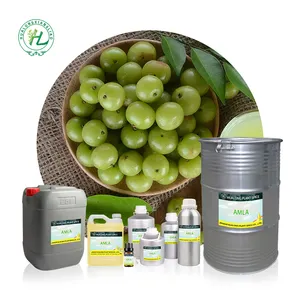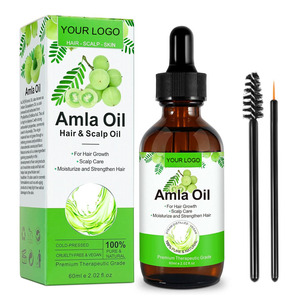(365 products available)



































































































 Ready to Ship
Ready to Ship






































































Amla puree in bulk is derived from the amla berry, an antioxidant-rich fruit also known as Indian gooseberry. This is mainly processed into purees and sold in bulk to different clients.
Organic Amla Puree
One of the most common types is organic amla puree. Organic farming involves growing the amla tree without any genetically or chemically modified supplements. In this case, inorganic fertilizers or pesticides. They ensure removal of any impurities in the fruit, hence a healthier and more nutritional option. This is why they are popular with companies that prioritize health and environmental safety.
Fresh Amla Puree
Fresh amla puree is usually made from raw, ripe amla berries and fresh juices. It is often refrigerated or frozen to keep it fresh for longer. It has a vibrant green color and a tart taste. It has a high nutritional content as it resembles the original fruit. It is usually packed with Vitamin C, fiber, and antioxidants.
Preserved Amla Puree
Preserved amla puree is often done via methods like pasteurization, addition of preservatives, or dehydration. This increases its shelf life. While this may reduce some nutritional factors in the potion, it still retains most of its benefits. This makes it suitable for companies needing long-lasting amla products.
Dried Amla Puree
The dried amla puree is a powdered version that has been dried and sometimes blended into a puree. This is often done to enhance the shelf life of the product. This puree can be reconstituted with water or any other liquid to form a fresh-like puree. This gives it the added benefit of being easily transportable.
Frozen Amla Puree
Frozen amla puree is prepared by blending amla berries into a puree and then freezing it. The freezing process locks in the nutrients and the berries’ initial freshness. This is often used by consumers or companies who wish to have a single-berry fresh experience without the need to refrigerate and store the berries’ actual water content.
Intergrafted Amla Puree
Amla fruits are often intergrafted with other fruits or herbs in some cases, creating unique blends. Such purees combine the benefits of amla with other fruits such as antioxidants in the etherberry or the vitamins in pomegranate.
Amla puree is usually bulk-produced and supplied to different companies for their needs. It is derived from amla fruit and has a host of impressive nutritional content.
Amla fruit
This is the main ingredient in amla puree. The small, round, green Indian gooseberry is the source of this nutrient powerhouse. It is high in vitamin C, fiber, and antioxidants. Most of them are then shipped to different parts of the world to enjoy the fruit in different forms.
Water
The amla berries are usually blended into a puree. In some cases a small amount of water is added to enhance the blending process. This helps in formation of a smooth puree without the addition of too much water and hence dilution of the content.
Citric acid
This is a common natural preservative found in most amla purees. It is often extracted from citrus fruits. It helps to acidify the puree hence preventing the growth of bacteria and mold in the puree. It also helps in prolonging the shelf life of the puree in some cases.
Ascorbic acid
Ascorbic acid is usually used in certain batches of amla puree as an antioxidant. It is often mixed into the puree to prevent oxidation and spoilage. In addition to this, it helps to maintain the high levels of vitamin C present in the puree.
Sugar or sweeteners
Sugars, including cane sugar, jaggery, or artificial sweeteners, are usually added to some bulk batches of amla puree. This is mainly to reduce the natural tartness of amla and increase the puree’s palatability.
Flavoring agents
Certain manufacturers add different flavors to the amla puree. Common examples include ginger, turmeric, honey, or citrus juice. These not only enhance the overall taste but also add extra health benefits to the puree.
Packaging and labeling
Once the amla puree is prepared, it is packaged in bulk using large containers such as plastic drums, glass jars, or vacuum-sealed bags. In some cases the packaging may also vary depending on the manufacturers’ preferences. Common examples include cardboard boxes, plastic pallets, or shrink wrap with over covers for easy transport and storage.
Amla berry puree offers a large host of health benefits and is used in different settings and scenarios.
Health and wellness products
Amla puree is well known for its high vitamin C and antioxidant content. This means it can often be used in juices, smoothies, and supplements for health boosts. Most juice manufacturers use amla puree as a base for drinks that focus on immune support and overall health.
Cosmetics and skincare
Due to its high antioxidant and hydrating characteristics, Amla is often added to skincare and hair care products such as oils, shampoos, and face masks. This helps to promote healthy hair and skin. Amla berries have natural tanning and anti-aging properties that help with skin rejuvenation and hair color preservation.
Food industry
Amla puree is made into jams, chutneys, and preserves by some food manufacturers. This offers a unique, tangy flavor profile that adds a different blend to these food items. The puree can also be used as a flavoring or natural preservative in diverse culinary applications. This is mainly because of its high vitamin content and natural sourness.
Pharmaceuticals
Due to its high concentration of antioxidants and other active compounds, amla is often used in Ayurvedic and herbal medicine. It is often used to manufacture traditional medicines aimed at improving digestion, detoxification, and general wellness.
Hair oils and conditioners
Amal puree is mostly added to hair oils and conditioners in the cosmetic industry. This helps in promoting hair growth, preventing dandruff, and strengthening hair follicles. Buyers in this industry should look for suppliers that have pure amla oil that has not been blended with other oils to enjoy the full benefits of the fruit.
Rejuvenation and detoxification
In spas and wellness centers, amla puree is often used in detoxifying body wraps, facials, and hair masks. Due to its anti-purine, high vitamin C, and antioxidant properties, it helps rejuvenate and cleanse the body, leaving the user with a fresh feeling.
Dog shampoos and conditioners
As mentioned earlier, amla has a high concentration of antioxidants and vitamin C. This helps to promote hair growth, prevent dandruff, and strengthen hair follicles. This makes it a great addition to dog shampoos and conditioners intended for boosting dog hair health.
Traditionally used
In India, Amla has been used for decades for various preparations. These include purees, dry amla powders, amla juice, amla hair oil, gooseberry oil, and a range of skincare products. Buyers can invest in already prepared such wholesale amla products and resell them in their local markets.
When choosing bulk amla puree for resale there are several important factors to consider to ensure the smoothness, safety, and satisfaction of customers.
Organic certification
Buyers should look for amla puree that has been certified organic when catering to a health-conscious market. Organic Amla puree is free from synthetic pesticides. This is a great selling point for customers looking for natural and organic health products.
Freshness and quality
Buyers should request samples of the amla puree before placing large orders to test the quality, taste, and texture. It is also important to consider the batch size and consistency. These are very important when manufacturers use automated processes to make them consistent in quality and texture. The batch size should also be manageable for storage and use.
Sourness
Amla puree has a distinctive tart or sour taste. This can however vary based on the region where the berries were sourced from. Buyers should settle for purees that are neither too bitter nor too sour. It should have a balanced flavor that is not too overwhelming for end users.
Texture
Healthy amla puree should be smooth without any large pulp or seed remnants. It should also have a thick consistency similar to other fruit purees. Buyers should experiment with different consistencies for different uses by potential customers ranging from skincare to juice manufacturing.
Flavor
Pure amla puree is somewhat bitter and very sour. This is why manufacturers often add other fruits like mango or citrus to balance the flavor out. Buyers should test the flavor of the puree especially if they intend to resell it to a market that is sensitive to taste, such as the beverage or smoothie industry. Buyers should consider bulk purees with added natural flavor enhancers or sweeteners for less tart flavors.
Vitamin content
One of the most distinctive features of Amla is its high vitamin C antioxidant content. While these nutrients may decrease over time, they should not be fully degraded. Buyers should request nutritional information from manufacturers for key vitamins and minerals such as vitamin C, iron, calcium, and other useful phytochemicals.
Labeling and transparency
Honest manufacturers will always provide labels to their batches with proper information on the ingredients used and any important notices. This includes whether the amla berries were organically or conventionally farmed. Labeling also extends to allergens, batch numbers, and expiration dates. This is important for buyers looking to stock the wholesale amla puree in the food, drink, or cosmetics industries. Transparency also improves safety and helps prevent possible adverse reactions in those with allergies.
Reputation of the supplier
Before placing an order, buyers should conduct research into the supplier’s reputation. This will ensure they settle for a trustworthy supplier who delivers high-quality products consistently and on time. Buyers should check if the supplier has any certifications such as ISO compliance that may indicate quality control presence.
The shelf life of amla puree depends on storage conditions and whether any preservatives have been added. Frozen or preserved amla puree can last up to 1 to 2 years. However, refrigerated amla puree typically lasts 1 to 2 months. Fresh amla puree usually lasts a week when stored properly in the refrigerator.
To make amla puree, the berries are usually washed and then blended into a smooth consistency. In some cases a small amount of water is added to enable blending. After that the puree is either refrigerated, frozen, or subjected to heat in order to preserve it.
Amla puree is usually plant-based. It is therefore naturally vegan. However, buyers should check for any additional ingredients added by manufacturers, such as dairy or honey, which may make it non-vegan.
Amla Puree may help with weight loss due to its high fiber content, which aids in digestion and helps one feel full for longer. This reduces overall calorie intake throughout the day. In addition, its low calorie count contributes to a negative calorie balance, which is favorable for weight loss.